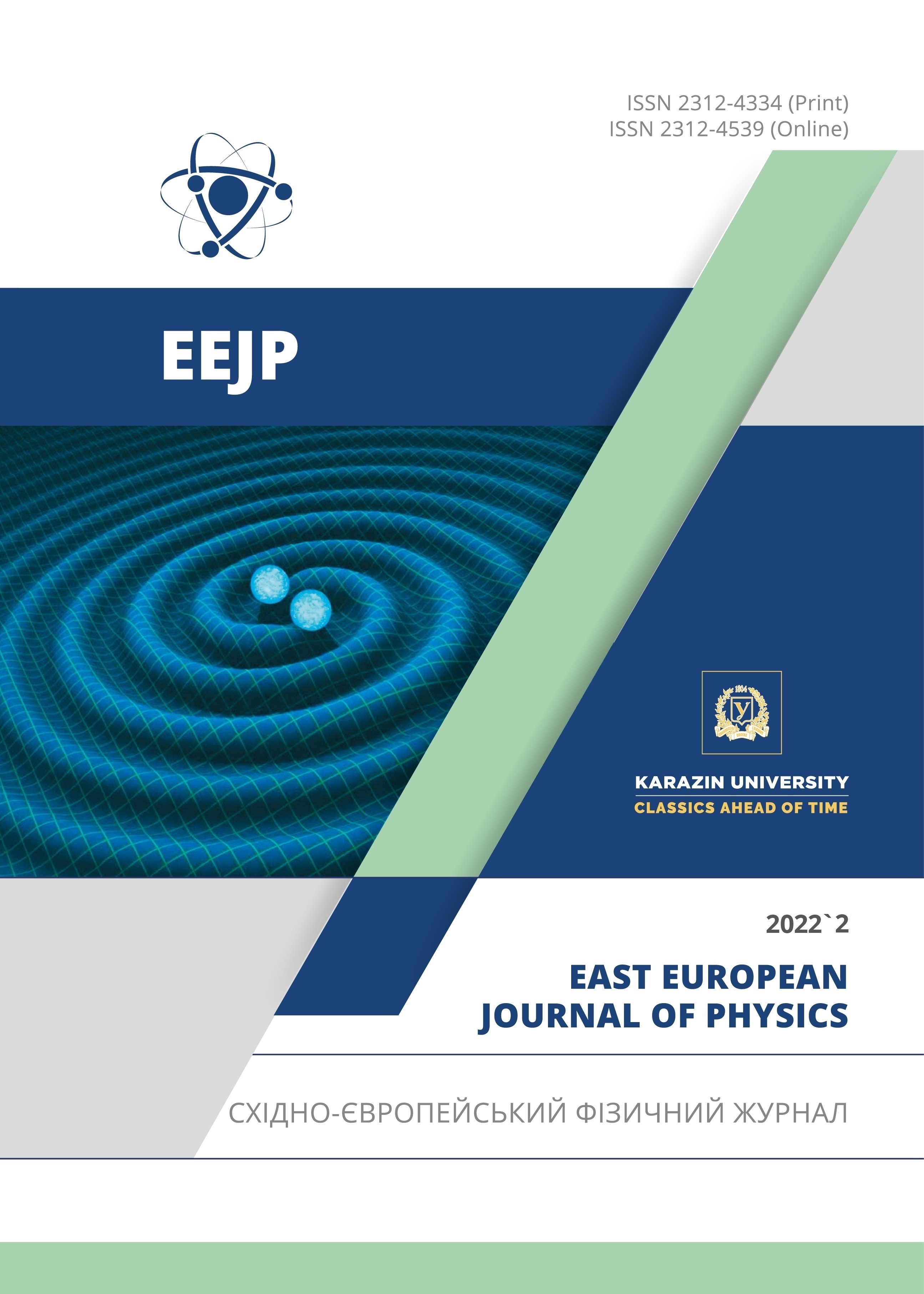Correlating Deposition Parameters with Structure and Properties of Nanoscale Multilayer (TiSi)N/CrN Coatings
Abstract
Multilayer (TiSi)N/CrN coatings were fabricated through vacuum-arc deposition by applying the arc currents of (100 ÷ 110) A on TiSi cathode and (80 ÷ 90) A on Cr cathode, negative bias potential connected to the substrate holder of –(100 ÷ 200) V and reactive gas pressure of (0.03 ÷ 0.6) Pa. Applying a negative bias voltage on substrates enhanced the ion bombardment effect, which affected the chemical compositions, phase state, mechanical and tribological properties of (TiSi)N/CrN coatings. Obtained results indicated that (TiSi)N/CrN coatings with Si content ranging from 0.53 to 1.02 at. % exhibited a high hardness level of (22.1 ÷ 31.1) GPa accompanied with a high Young’s modulus of (209 ÷ 305) GPa, H/E* level of (0.080 ÷ 0.100), H3/E*2 level of (0.15 ÷ 0.33) GPa, and the friction coefficient of 0.35. Values of critical loads at dynamic indentation, changes in friction coefficient and level of acoustic emission signal evidence the high adhesive strength of (TiSi)N/CrN coatings, which allows recommending them to increase cutting tool performance.
Downloads
References
F. Cai, X. Huang, Q. Yang, R. Wei and D. Nagy. Surf. and Coat. Technol. 205, 182 (2010) https://doi.org/10.1016/j.surfcoat.2010.06.033
A.O. Andreev, L.P. Sablev and S.N. Grigor`ev, Vacuum-arc coatings, (Kharkiv, NNC KIPT, 2010), 318 p. (in Russian).
B. Navinšek, P. Panjan and I. Milošev. Surf. and Coat. Techn. 97, 1-3, 182 (1997) https://doi.org/10.1016/S0257-8972(97)00393-9
S. Veprek, М. Veprek-Heijman, Р. Karvankova and О.Prochazka, Thin Solid Films. 476, 1, 1-29 (2005). https://doi.org/10.1016/j.tsf.2004.10.053
A. D. Pogrebnjak, A. P. Shpak, N.A. Azarenkov and V. M. Beresnev, Physics-Uspekhi, 52(1), 29 (2009). https://doi.org/10.3367/UFNe.0179.200901b.0035
H. Zeman, J. Musil and P. Zeman, J. Vac. Sci. Technol. A22 (3), pp. 646-664 (2004).
P.J. Martin, A. Bendavid, J.M. Cairney and M. Hoffman, Surf. and Coat. Technol. 200, 7 2228-2235 (2005). https://doi.org/10.1016/j.surfcoat.2004.06.012
A. Cavaleiro and J. Hosson, Nanostructured Coatings, (Springer New York, NY, 2006), 648 p. https://doi.org/10.1007/978-0-387-48756-4
Sh.-Min Yang, Yi.-Yu.Chang, D.-Yi.Lin, Da-Yu.Wang and W. Wu, Surf. & Coat. Techn. 202, 10, 2176 (2008). https://doi.org/10.1016/j.surfcoat.2007.09.004
Y.V. Kunchenko, V.V. Kunchenko, I.M. Neklyudov, G.N. Kartmazov and A.A. Andreev, PAST, 2 (90), 203 (2007).
G.V. Samsonov and I.M. Vinnitskiy, Refractory compounds: handbook, (Metallurgiya, Moskow, 1976), pp.560. (in Russian).
G.V. Samsonov, L.A. Dvorina and P.V. Rud`, Silicides, (Metallurgiya, Moskow, 1979), pp.272. (in Russian).
S.A. Firstov, V.F. Gorban`, E.P. Pechkovskiy and N.A. Mameka, Materialovedenie, 11, 26 (2007).
D.V. Shtansky, S.A. Kulinich, E.A. Levashov, A.N. Sheveiko, F.V. Kiriuhancev, and J.J. Moore, Thin Solid Films. 420-421, 330 (2002). https://doi.org/10.1016/S0040-6090(02)00942-2
J. Valli, J. Vac. Sci. Techn., A4, 3007 (1986). https://doi.org/10.1116/1.573616
Copyright (c) 2022 Vyacheslav M. Beresnev, Serhiy V. Lytovchenko, Serhiy A. Klymenko, Denis V. Horokh, Аndrey S. Manohin, Bohdan O. Mazilin, Volodymyr O. Chyshkala, Vyacheslav A. Stolbovoy

This work is licensed under a Creative Commons Attribution 4.0 International License.
Authors who publish with this journal agree to the following terms:
- Authors retain copyright and grant the journal right of first publication with the work simultaneously licensed under a Creative Commons Attribution License that allows others to share the work with an acknowledgment of the work's authorship and initial publication in this journal.
- Authors are able to enter into separate, additional contractual arrangements for the non-exclusive distribution of the journal's published version of the work (e.g., post it to an institutional repository or publish it in a book), with an acknowledgment of its initial publication in this journal.
- Authors are permitted and encouraged to post their work online (e.g., in institutional repositories or on their website) prior to and during the submission process, as it can lead to productive exchanges, as well as earlier and greater citation of published work (See The Effect of Open Access).








